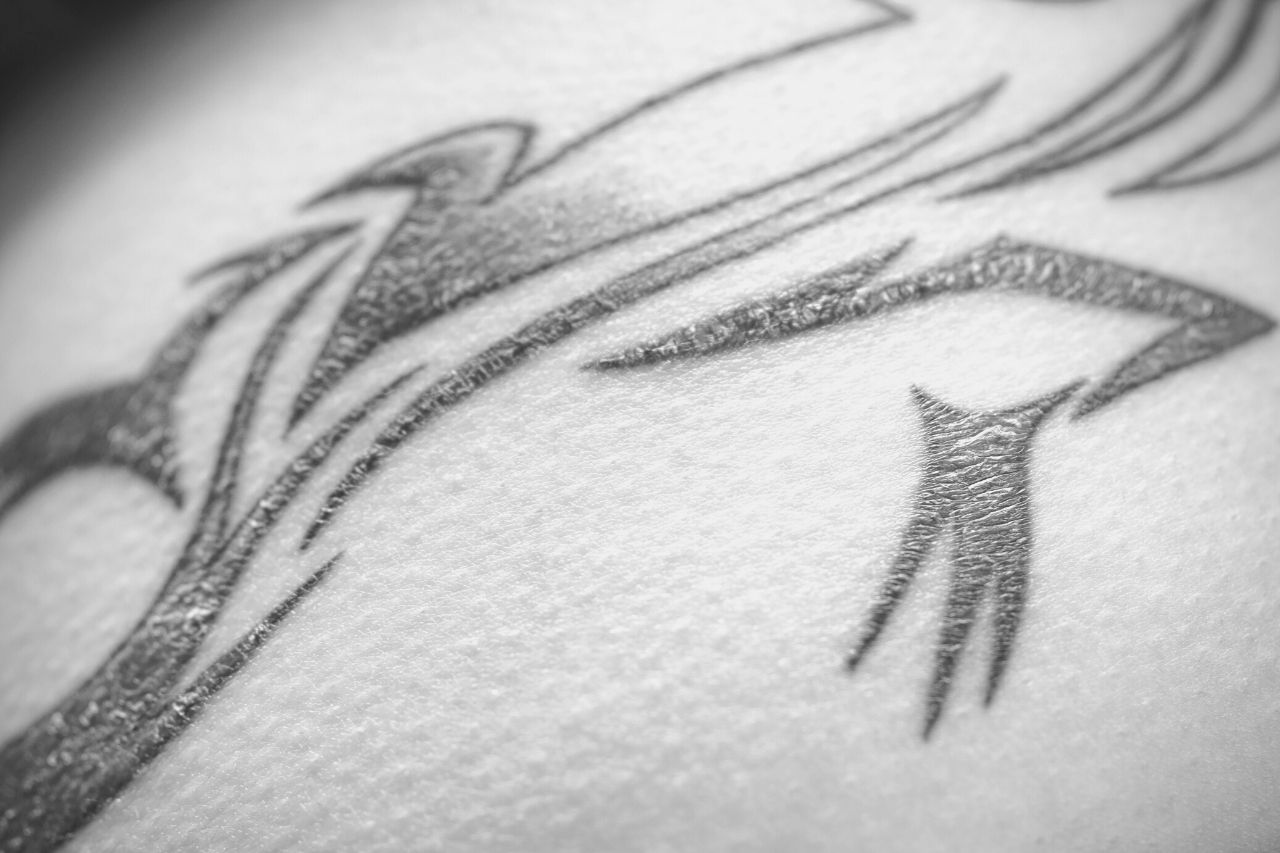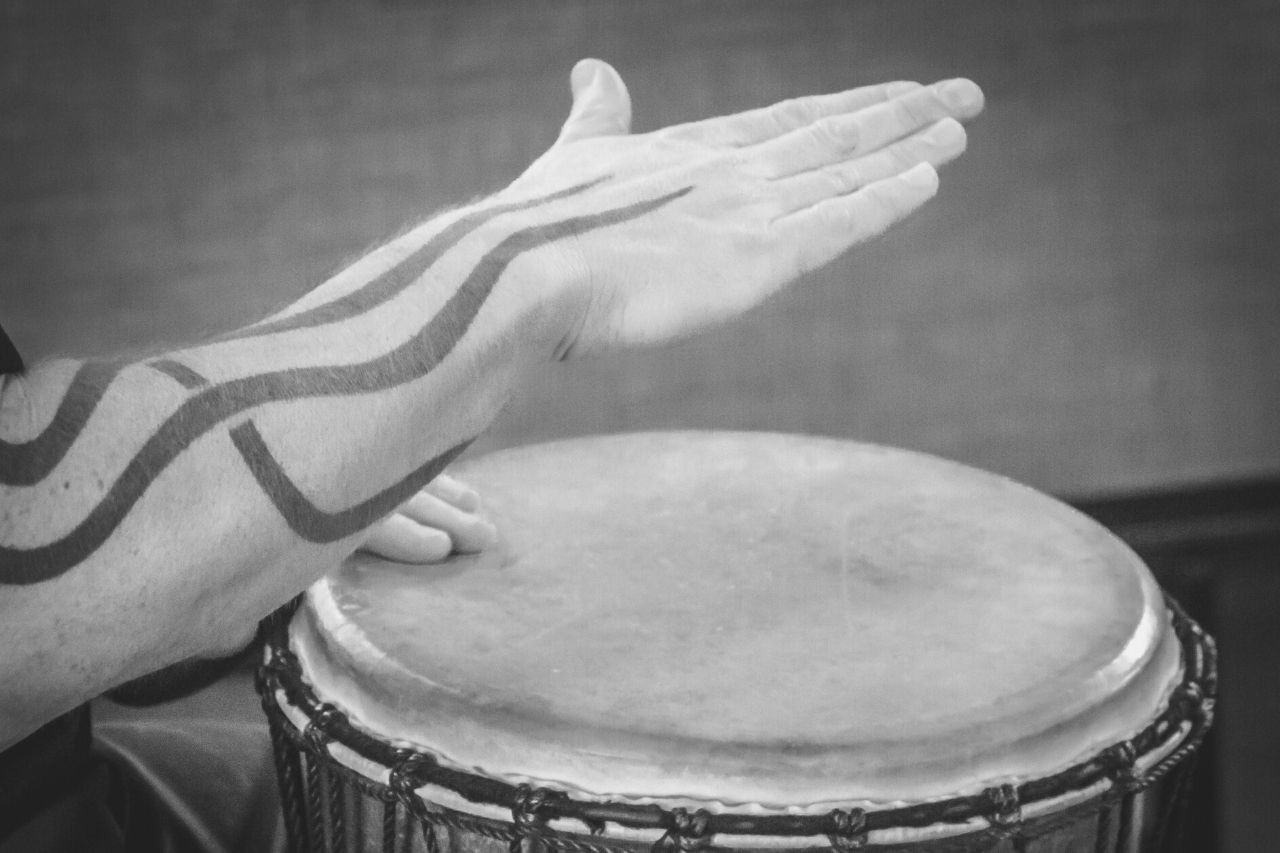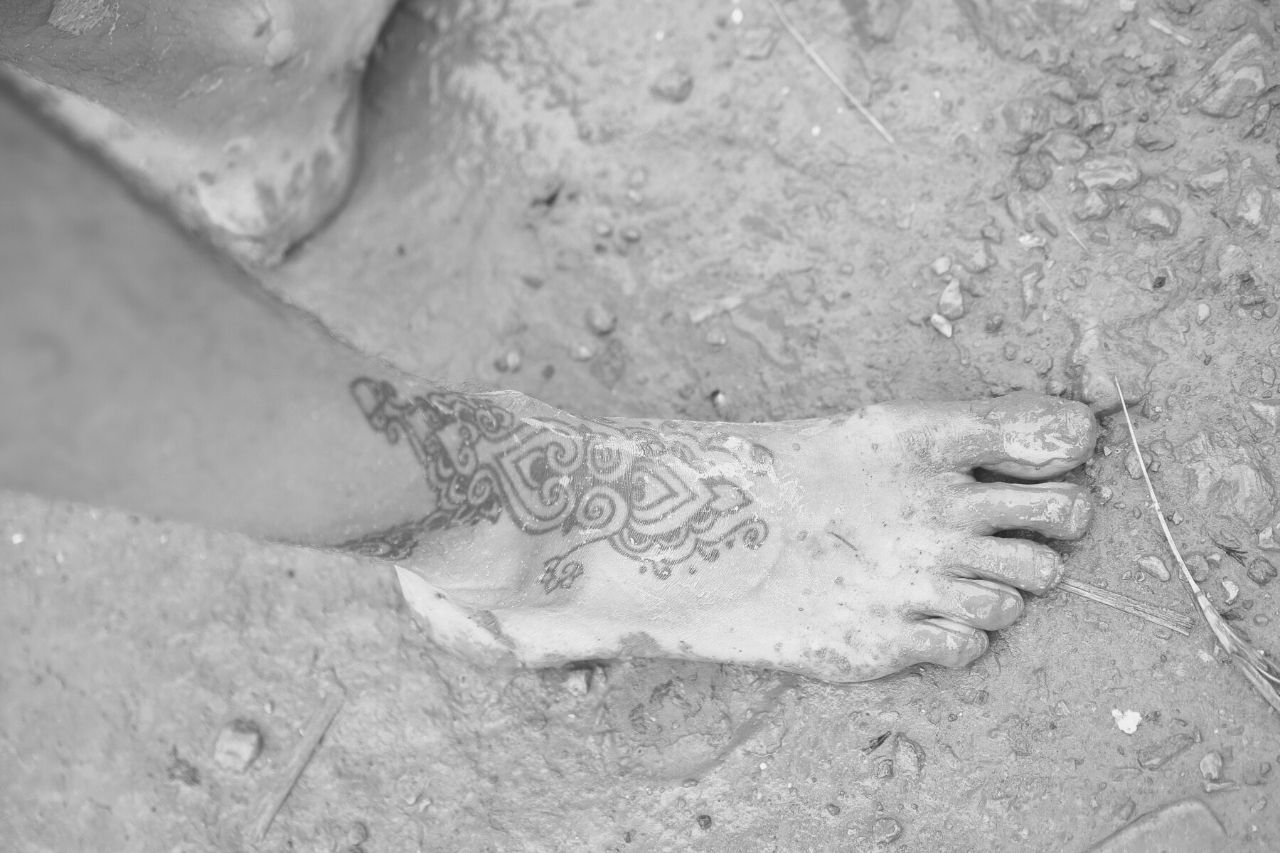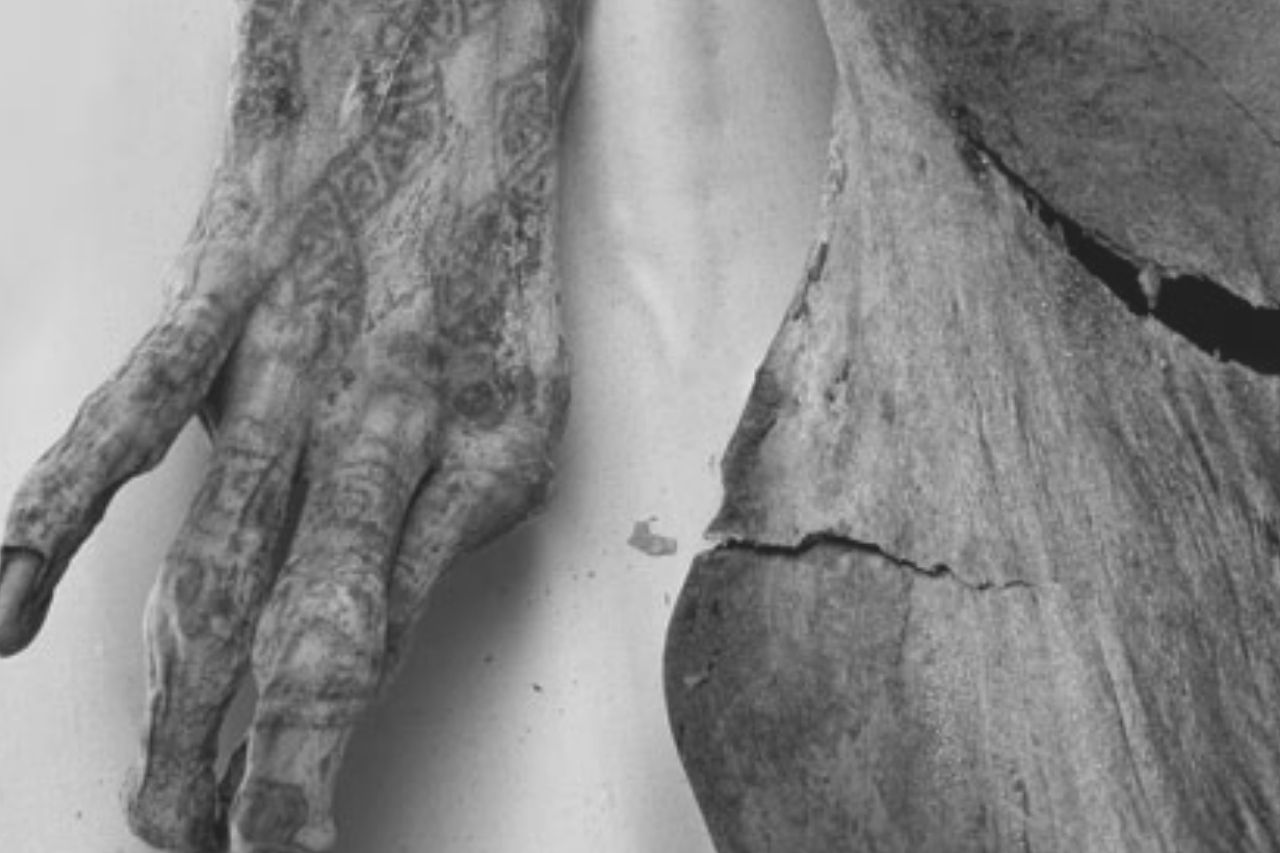How Ancient Egyptian Tattooing Changed Our Understanding of Egyptian History
Ancient Egyptian tattooing is likely as old as Egypt itself, with archeologists discovering tattoos on mummies dating back to the Predynastic period. Recent discoveries have helped shed light on ancient Egyptian tattoos, their meaning, and their cultural impact.
The ancient Egyptians are now thought to be one of the first civilizations who used tattooing as a form of art. Join us as we travel back in time and discover the secrets of millennia-old mummies and uncover Egypt’s forgotten past.
The Origins of Tattooing in Ancient Egypt
Egyptologists have long debated about the origins and nature of ancient Egyptian tattooing, and it has only been recently that new evidence surfaced and changed our understanding of ancient Egyptian tattoos.
It has previously been assumed that only women in Ancient Egypt had tattoos due to the fact that female figurines found in tombs were depicted with tattoos. Furthermore, it was widely believed that only lower class women had them and that tattoos and body art found on female mummies indicated that the women who wore them were ‘dancing girls’ and prostitutes.
How New Discoveries Changed Our Understanding of Egyptian Tattoos
The assumption that only ancient Egyptian women had tattoos was not challenged until scientists had reanalyzed two mummies, known as the Gebelein mummies, found at the beginning of the 20th century.
Two mummies, a male and a female, have been dated to 3350 to 3017 BCE, which places them somewhere in the Predynastic period of Egypt. The mummies were examined with infrared imaging, which enables scientists to see the otherwise invisible markings on the mummified skin. Both mummies had tattoos.
The male mummy depicted the images of a wild bull and a Barbary sheep, whereas the female body displays four S-like symbols on her shoulder and an L-shaped line on the abdomen. It has been assumed that these depict a stave or a wooden staff.
Gebelein mummies proved for the first time that both sexes in Ancient Egypt had tattoos.
Ancient Egyptians Tattoos as a Form of Art and Cultic Worship
Most scholars consider tattoos to be one of the earliest known forms of art appearing in various cultures. It has also been strongly suggested that tattoos have been used as amulets and had a religious or spiritual purpose. Ancient Egyptian mummy tattoos, most notably the aforementioned Gebelein mummies, seem to have had symbolic relevance.
Archeologists have suggested that the bull tattoo on the male mummy was a symbol of male virility, but the meaning of the woman’s tattoos remains unclear. The woman’s tattoos may have had a religious significance, but our scant knowledge of Predynastic Egypt – an era before writing – means that these are only speculations.
Women of Dubious Status or Priestesses?
Egyptian body art, as we have seen, was not exclusive to women, nor was it a sign of low social status. The previously held view that only women of ‘dubious status’ had tattoos has been rejected by archeologists in recent times.
Many female mummies with tattoos were found at Deir el-Bahari, a royal burial ground near Luxor and the site of the ancient city of Thebes, the capital of Egypt, during the height of its power and international prestige. Only women of high rank were buried at Deir el-Bahari, which meant they were either priestesses or royal concubines. It is very likely that tattooing of ancient Egyptian women had a religious purpose and that tattoos functioned as permanent amulets, the purpose of which was to protect women during pregnancy and childbirth.
The Goddess Hathor and the Egyptian Women
Hathor was one of the most important deities in the ancient Egyptian pantheon that was commonly depicted as a woman with the head of a cow. Because she was a symbol of fertility, Hathor was the goddess protector of women and was invoked by women during childbirth. She remained the most popular goddess among Egyptian women up until the Greco-Roman period, when her cult was sidelined by the increasingly popular cult of Isis.
Tattooing During the Middle Kingdom
Even though tattooing in Egypt dates back to the Predynastic period, the best-preserved ancient Egyptian tattoos found to date are from the Middle Kingdom period (c. 2040 – 1780 BCE), often considered as the golden age of ancient Egyptian art and culture.
Two Egyptian female tattooed mummies were discovered at Deir el-Bahri in the late 19th century and are today one of the finest examples of traditional mummy tattoo art. Both mummies bore tattoos of ‘geometrically arranged dots and dashes.’ The previously held belief among scholars that tattooing was exclusive to lower class women has definitely been discredited.
The tattoos found on two Deir el-Bahri mummies share a striking resemblance with tattoos found on Middle Kingdom fertility dolls, as well as other female mummies. There is mounting evidence that women of all social classes had tattoos and that the markings found on Middle Kingdom mummies were, in fact, fertility symbols.
The Mummy of Amunet Answers Age-Old Mystery of Symbolism Behind Egyptian Tattoos
Egyptologists have discovered a great number of faience figurine fragments dating back to the Middle Kingdom period showing tattoo markings on the abdomen and thighs. These dotted geometric tattoo patterns usually run horizontally across the lower abdomen.
Archeologists believe the figurines were placed in tombs to ensure the continuation of the deceased’s procreative abilities in the afterlife and are traditionally known as ‘Brides of the Dead.’ The figurines are thought to have served as a form of resurrection insurance.
It was not until the discovery of a tattooed mummy known as Amunet at Deir el-Bahri in 1891 that archeologists realized tattooing had been a widespread practice among Egyptian women.
The female mummy was identified as the priestess of the goddess Hathor at Thebes during the 11th dynasty (c. 2134 – 1990 BCE). The tattooed markings found on her mummy undoubtedly bear a striking resemblance with the patterns found on faience figurine fragments.
Two more mummies were excavated not far from the tomb of Amunet at Deir el-Bahri, and both had similar body markings that consist of a multitude of dots tattooed on thighs and the abdomen.
Tattooing in Ancient Egypt: A Therapeutic Practice or a Form of Cultic Worship?
The birth of Egyptology dates back to the beginning of the 19th century and Napoleon’s invasion of Egypt, then a province of the Ottoman Empire. It would not be until the latter half of the 19 century that European archaeologists, scientists, and scholars became interested in Ancient Egypt.
A series of great discoveries led to the surge of popular interest in all things Egyptian that culminated in the discovery of the tomb of Tutankhamun by Howard Carter in 1922.
Shortly after the discovery of the mummy of Amunet, an eminent French doctor and collector, Daniel Fouqet, wrote that the markings found on mummies at Deir el-Bahri had a medicinal or therapeutic purpose. Fouquet suggested that the tattoos were ‘an established treatment for a condition of the pelvis’ rather than an ornament.
Fertility Rituals and the Importance of Hathor
It is impossible to ascertain whether tattoos on mummies served a therapeutic or a more symbolic function. Nevertheless, we would be wrong to assume that these are mutually exclusive. Indeed, medicine and magic in Ancient Egypt were one and the same, evident in the fact the Egyptians used amulets and spells as medicine.
It does not seem unlikely that the Egyptians used tattoos for both medicinal and religious purposes. In Ancient Egyptian religion, Hathor was linked with fertility, childbirth, and love and was also associated with the afterlife. Egyptian women of all classes invoked Hathor protection during pregnancy. Despite her role as a goddess who protected women, Hathor’s clergy was not exclusively female.
Tattoos May Have Served as a Symbolic Protection During Childbirth
Childbirth in pre-industrial times posed a major risk both for the women and the still unborn child in the womb. In Ancient Egypt, where life expectancy for men was 40 to 45 and 30 to 35 for women, childbirth was fraught with danger.
Egyptians used a great number of amulets, spells, and rituals to ease pregnancy and ensure smooth childbirth. Tattoos found on female mummies may have been another form of protection of the unborn child in the womb and during childbirth. As the woman’s pregnancy progressed, the tattoos on her abdomen and thighs would have formed a net as the belly swelled, extending from the lower back to the navel, thus creating a protective web between the womb and the outside world.
What Was the Role of the Flamboyant God Bes?
In addition to Hathor, another ancient Egyptian deity was frequently linked with childbirth and fertility. Bes, a protector god of pregnant women and children, was depicted as a mischievous dwarf who wore long hair and a beard.
In addition to his role as the protector of pregnant women, Bes embodied the more joyous side of life, such as drinking and revelry. The Egyptians believed Bes could ward off ghosts and other evil spirits, and for this reason, pregnant women would often seek his protection.
Further evidence of the protective role of tattoos can be found in the fact that pregnant women tattooed Bes on their inner thighs.
Bes as a Lucky Charm and a Symbol of Fertility
In his other aspects, Bes appears as a god of sexual attraction, fertility, joy, and humor. It has been suggested that women tattooed Bes on their thighs not only to invoke his protection at childbirth but also as a good luck symbol. Some have gone so far as to suggest that tattoos of Bes served as a protection against sexually transmitted diseases.
How Did Tattooing in Ancient Egypt Work?
In a time before adequate tools and only a rudimentary understanding of how the human body worked, tattooing carried a certain risk, namely that of infection, which in those times could often prove fatal.
Tattooing kits in Ancient Egypt consisted either of sharp metal points (Abydos kit) with a wooden handle or bronze needles (Gurob’s kit). The tattoo artists used a dark pigment of dye, most commonly black, blue, or green. These colors were highly significant in ancient Egyptian mythology. Black symbolized life, birth, and resurrection, while green represented life, and blue was linked with fertility and birth.
Ancient Egyptian Tattoo Artists Were Most Likely Elderly Women
Tattoo artists needed to be experienced and possess knowledge of the ancient Egyptian religion and the symbolism behind patterns and colors used which led scholars and archeologists to believe tattoo artists were older women, who, most likely, were wise-women and seers well-versed in ancient lore.
Female seers in Egypt are thought to have fulfilled the role of doctors and possibly obstetricians. Magic and medicine in Egypt, as we have already noted, were closely intertwined. Hence it would not be illogical to assume wise women and seers played a prominent role in ancient Egyptian medicine, especially in rural areas.
The New Kingdom Period and the Mummies of Deir el-Medina
Egyptian tattoos history spans more than thirty centuries, from the Predynastic times to the New Kingdom (c. 1550 – 1077 BCE), when Egypt reached the zenith of its power. Egypt’s capital during this period was located at Thebes in Upper Egypt.
Not far from the ruins of the ancient metropolis, on the west bank of the Nile in the cliffs and hills that rise from the barren desert landscape, stands the largest necropolis of Ancient Egypt: The Valley of the Kings. Many kings and queens of Egypt were buried there, including the famous King Tutankhamun and Seti I.
Thousands of workers, both unskilled laborers and highly skilled artisans and artists, worked on the tombs in the Valley of the Kings for a period of nearly five centuries. The ruins of the workmen village at Deir el-Medina yielded some of the most fascinating discoveries about community life in Ancient Egypt.
The Tattooed Mummy of Deir el-Medina
In 2014, an American researcher from the University of St. Louis found a well-preserved torso of a mummy with tattoos at the neck. More than thirty tattoos were identified on one female mummy, and most seem to be linked with the goddess Hathor.
In addition, an eye of Horus was tattooed on the mummy’s throat, both her shoulders and back. The discovery of divine eyes on her body seems to indicate an important role in the priestly hierarchy or even some kind of priestly rank, at the time of Egyptian history when the importance of female priesthoods was declining.
Ancient Egyptian Tattoos Still Remain a Mystery
Evidence found so far strongly indicates that tattooing in ancient Egypt served both a practical and religious purpose. The great majority of tattooed mummies found to date belong to women and are connected, in one way or another, with the goddess Hathor. While it is not possible to ascertain whether tattoos had no other purpose, it remains very likely they were used as talismans and lucky charms, especially by young women.
A previously held view among Egyptologists that only lower-class women had tattoos has no basis in fact. Higher-class women, including priestesses and royal consorts and concubines, had tattoos, although no tattoos on Egyptian queens have been found.
There Are No Written Records Mentioning the Practice of Tattooing
Our knowledge of tattooing in ancient Egypt relies exclusively on archeological findings due to the complete absence of any mention of tattoos in written records. Although new evidence has surfaced in recent times about the importance and purpose of tattooing in ancient Egypt, we still have many gaps to fill before we can speak authoritatively about ancient Egyptian tattoos.
Conclusion
Tattooing in ancient Egypt had both a practical (medicinal) and religious purpose. Women of all social classes choose to wear tattoos. In most cases, tattoos served as amulets to protect women during pregnancy and childbirth.
Tattoos were highly important in Ancient Egypt for a number of reasons. Some of these include:
Seeking protection from a god or goddess, usually Hathor and Bes, deities linked with fertility, birth, and sexuality
Showcasing one’s social status, displaying beauty, and possibly attracting the opposite sex
Honoring a deity, i.e., cultic worship
The oldest tattooed mummies predate both Ancient Egypt and written language. Ancient Egyptians practiced tattooing throughout their history, a fact supported by ample archeological evidence.
Archeologists continue to gain fascinating new insights into the world of Ancient Egypt, and their interpretation of tattoos found on mummies is constantly evolving. Tattoos can tell us a lot about the daily lives, beliefs, and habits of ancient Egyptians and their society.














